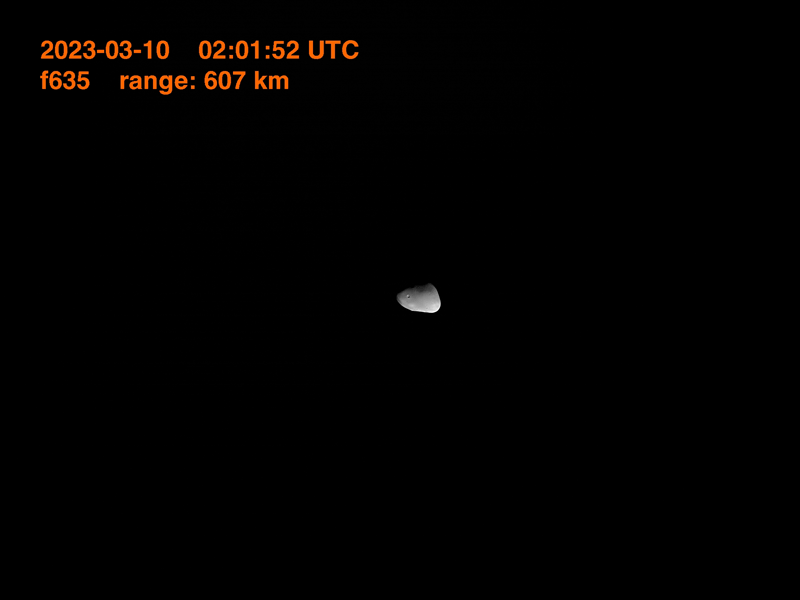The Hope spacecraft from the United Arab Emirates has captured the first high-resolution images of Mars’ moon known as Deimos.
Hope, officially named the Emirates Mars Mission (EMM), conducted a flyby of Mars’ moon over a month ago.

Hope flies past Deimos and captures its unusual shape along with pockmarks on the moon’s surface. (Image: Emirates Mars Mission).
Hessa Al Matroushi, the lead scientist of EMM, stated that the team was thrilled by the first images of the 12.4 km wide moon that were sent back. On April 24, Al Matroushi’s team revealed the images at a meeting of the European Geosciences Union in Vienna.
Similar to Earth’s moon, Deimos is gravitationally locked to its planet, meaning that all previous observations from low orbit or the surface of Mars have only seen one side of this moon.

Deimos formed from the same material as the Red Planet, according to new observations. (Image: Emirates Mars Mission).
However, compared to all missions that have explored the Red Planet, Hope has an unusually long and high orbit, reaching over 40,000 km above the surface of Mars at its highest point.
This orbit allows the spacecraft to observe Deimos from above and capture images of the previously unseen side of this moon, Al Matroushi explained. Nonetheless, EMM has not yet been able to capture images of another moon of Mars, Phobos, because this celestial body is located less than 10,000 km from the surface of the Red Planet, lower than the spacecraft’s lowest orbital point.
During the flyby on March 10, the Hope team utilized all three onboard instruments to record data ranging from infrared to ultraviolet measurements of Deimos.

Image of Mars’ moon at the spacecraft’s closest approach. (Image: Emirates Mars Mission).
The relatively flat spectrum obtained indicates that the moon’s surface material is similar to that of Mars, rather than the carbon-rich rock commonly found in asteroids. This means that Deimos formed from the same type of material and at the same time as Mars, rather than being a rogue asteroid captured by the Red Planet’s gravitational pull.
|
Hope is a 1.35-ton spacecraft, valued at $200 million, launched by a Japanese rocket in July 2020 and arriving at Mars in February 2021. The spacecraft regularly observes the Martian atmosphere, with its primary scientific objective being to study seasonal changes in the atmosphere and weather patterns of the Red Planet. Once this mission is completed, while there is still fuel left, the team plans to use the engines to place Hope into an orbit that will allow it to pass by Deimos multiple times for closer study of Mars’ moon. |





















































